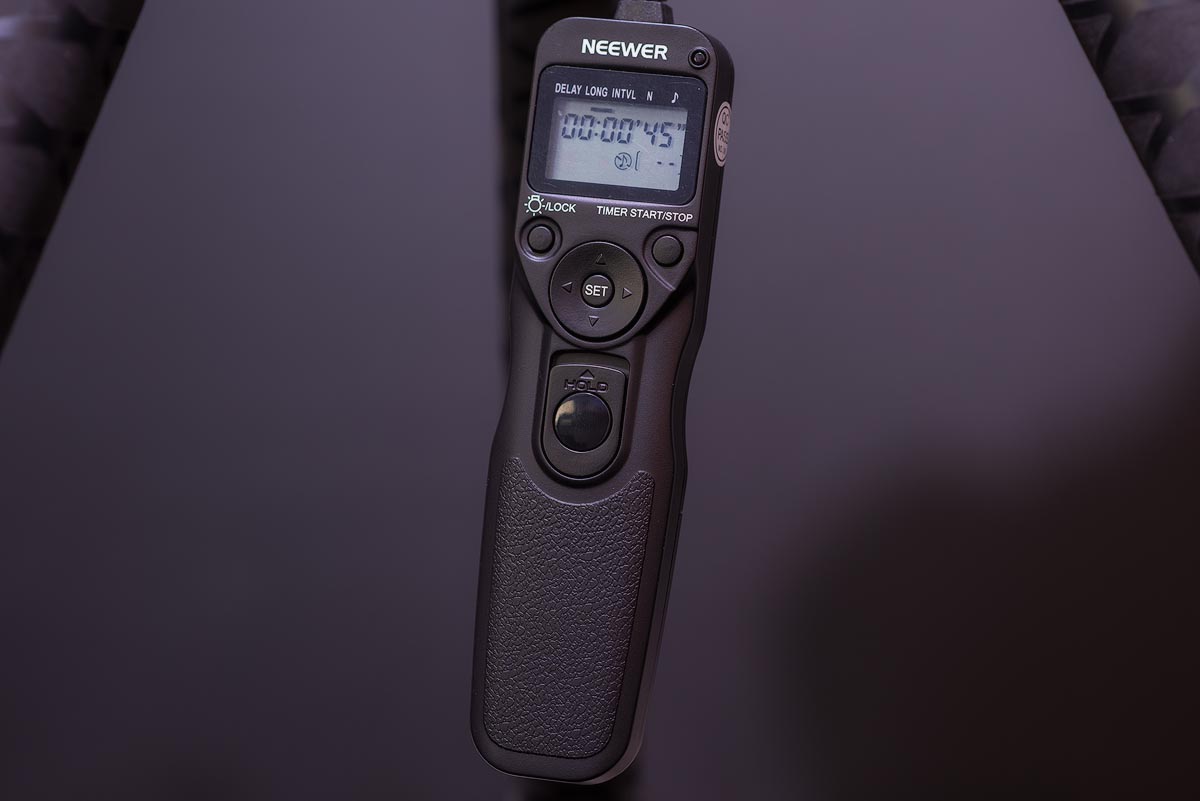D850 Electronic Shutter Startrails
I recently bought a D850, and I’ve been experimenting with the electronic shutter options for shooting startrails.
For one startrail shoot on my D810 the mechanical shutter goes up and down between 600 and 1000 times. The D850 can do the same amount of images with only one actuation of the mechanical shutter, which occurs when it flips the mirror up to enter Live View mode, everything else is done electronically. This saves a huge amount of wear on the shutter mechanism.
There are 2 different methods I’ve been using for this.
Method 1 uses the D850’s built in intervalometer, the upper limit for exposure time using this method is 30 seconds.
Interval Timer Shooting can be found in the Photo Shooting Menu.
The settings I use for this mode are:
Set mode dial to Q, this prevents the LCD from being powered up while displaying a blank screen.
manual exposure mode, 30 second exposures
The Nikon intervalometers work slightly different to most others, the interval is the time between the start of one exposure and the start of the next exposure, so a 10 second exposure with a 15 second interval would give a 5 second gap between exposures.
Set intervals to 34 seconds, anything lower will result in missed frames. (setting this to 33 seconds appeared to work but I was seeing one or two missed frames for every 50 shots. There is some inconsistency in the timings when using the built in intervalometer).
Although this sounds like a large gap between frames when compared to the usual 1 second intervals, I couldn’t see any difference when comparing images shot with 1sec vs 3sec intervals at 100% (i did this test before I realized that 3 seconds wasn’t long enough to avoid missed frames).
Interval x shots/interval: 750x1 (the x1 is the number of shots per interval, so here we have 750 intervals of 34sec, and it will take one 30 second shot per interval).
Exposure smoothing (this has no effect when in manual exposure mode)
Silent Photography: On
Turn off image review, found in the Playback menu.
This works well in an area with heavy light pollution, where I would be using 30 second exposures to control that light pollution. When shooting in locations with darker skies I’d prefer to use 45-60 second exposures, using 30 seconds results in more images to be cleaned and stacked and increases the processing time.
Method 2 uses an external intervalometer, this method is needed for exposure times above 30 seconds.
Set camera to Manual exposure mode, exposure time to Bulb.
Mode dial set to Q (other modes keep the rear LCD screen powered up during the exposures)
Intervalometer set to 45 second expsoures, 1 second intervals.
Set silent live view photography to mode SL1, this can be done in the Photo Shooting Menu or by going into Live View mode and pressing the “i” button.
Camera must be in Live View mode when starting the sequence on the intervalometer, otherwise it will run the sequence in normal shooting mode using the mechanical shutter.
The rear LCD will briefly illuminate (for a fraction of a second) after each shot, I haven’t found any way to avoid this. I’ve tried intervals between shots down to 0.1 seconds and also tried an intervalometer that had been modified to disable the AF signal.
I regularly leave my cameras unattended when shooting startrails, the LCD flashing on could be a problem if someone happens to be in the area and sees it. I’ll probably just cover the LCD with something to avoid this.
Battery usage is very similar in both methods, I haven’t run a full shoot right through the night yet but in my tests a single EN-EL15 is giving me well over 500 shots. With a second one in the battery grip that’s enough to shoot right through the night.
I haven’t compared the electronic shutter options directly to the mechanical shutter in regards to battery life yet, I run my D810 on a high capacity DSTE battery which doesn’t work on the D850 so I don’t have a baseline for EN-EL15 runtimes.
So far I’ve saved 13,000 shutter actuations by using the electronic methods for startrails and timelapse sequences. The mechanical shutter life expectancy for the D850 is rated at 200,000.
You can get the shutter count program here. This is the only app I’ve found that shows separate mechanical and electronic shutter counts.













